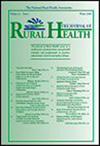A new model-based approach for estimating rural hospital markets
Abstract
Purpose
To provide a new approach for defining rural hospital markets.
Methods
First, we estimated models of hospital choice. We defined hospitals in the choice set using nationwide hospital data from the Healthcare Cost Report Information System (HCRIS). We modeled hospital choice using conditional logit regression and 2019 Medicare Fee-for-Service (FFS) claims data from the Centers for Medicare & Medicaid Services (CMS) Virtual Research Data Center. Next, we calculated estimated inpatient and emergency department utilization by patient ZIP code. We then estimated the total Medicare FFS volume for each hospital as well as the percent of each hospital's volume attributable to each ZIP code. We sorted ZIP codes by the patient volume attributable to the given hospital (from most volume to least volume) and then added ZIP codes to the market until at least 50% of the hospital's total patient volume was represented.
Findings
The average rural hospital market included three ZIP codes, an estimated population total of 37,221, and an estimated 5385 Medicare FFS beneficiaries. Furthermore, the average rural hospital had an estimated market share of 29%. A lower estimated market population was found for Critical Access Hospitals, hospitals unaffiliated with a system, hospitals with a smaller number of acute beds, and hospitals with fewer staff.
Conclusions
We developed a new approach for defining rural hospital markets. This approach can be used to inform health services researchers, policymakers, and communities about key market predictors of rural hospital financial distress, populations adversely affected by rural hospital closure, and more.

 求助内容:
求助内容: 应助结果提醒方式:
应助结果提醒方式:


